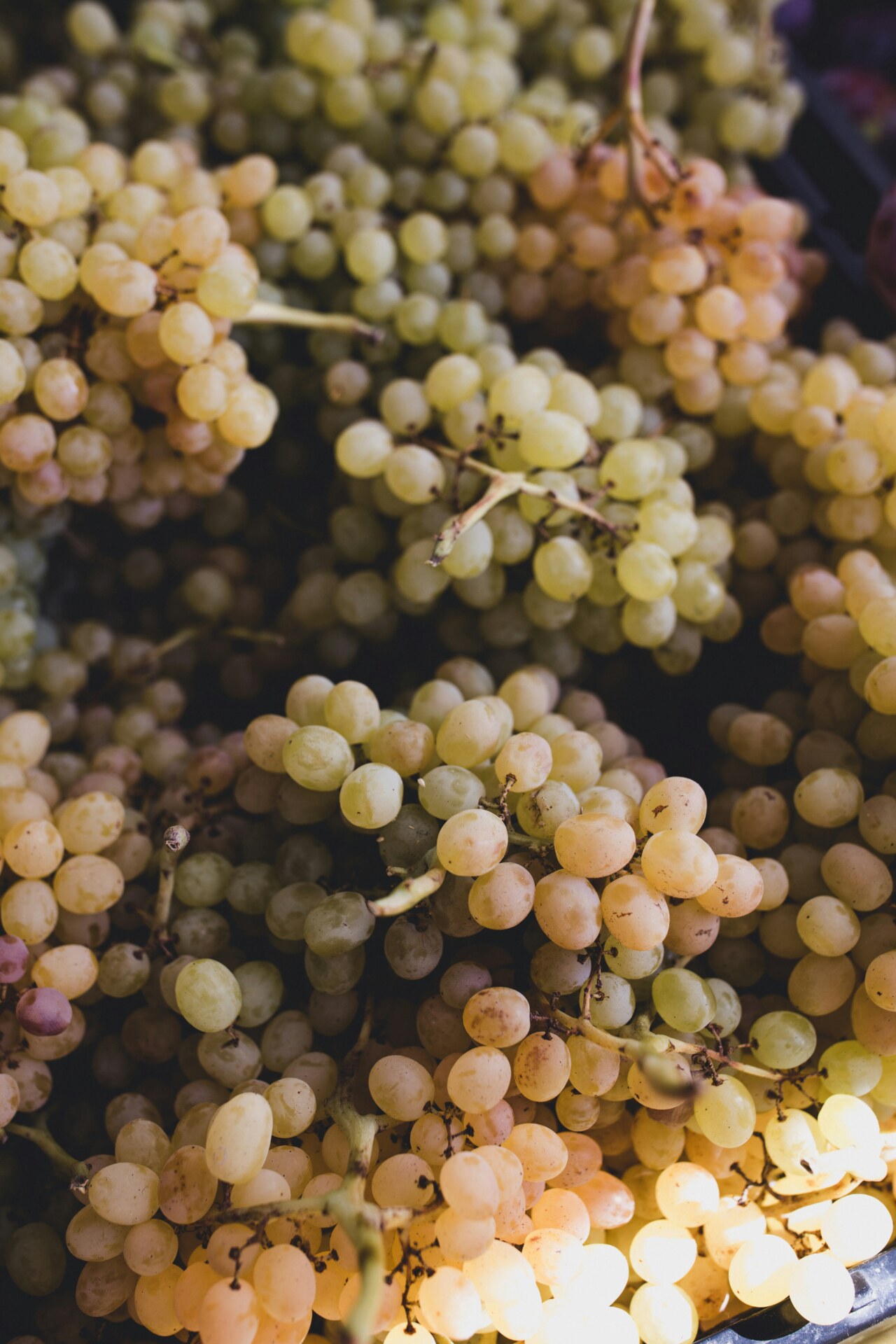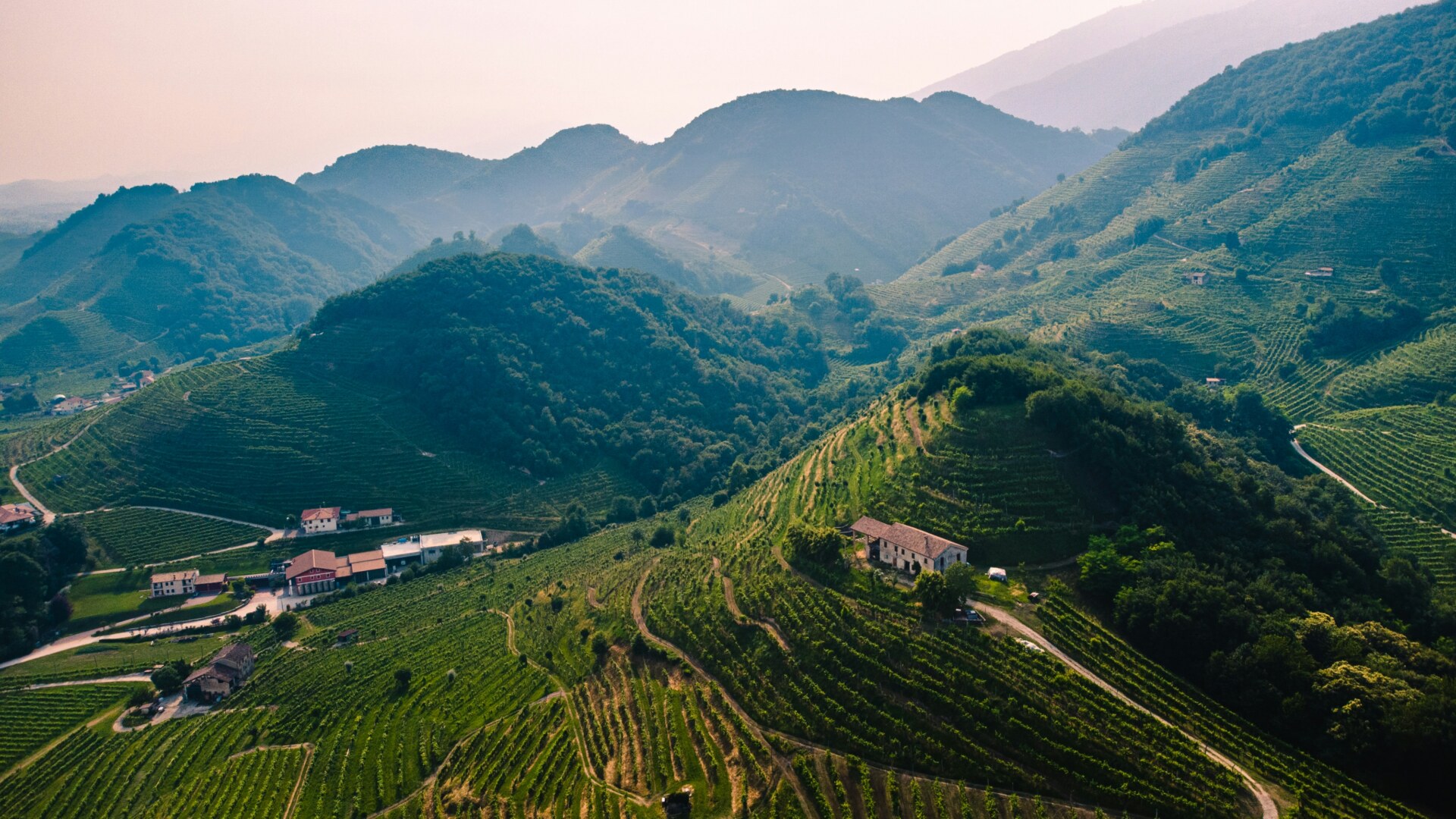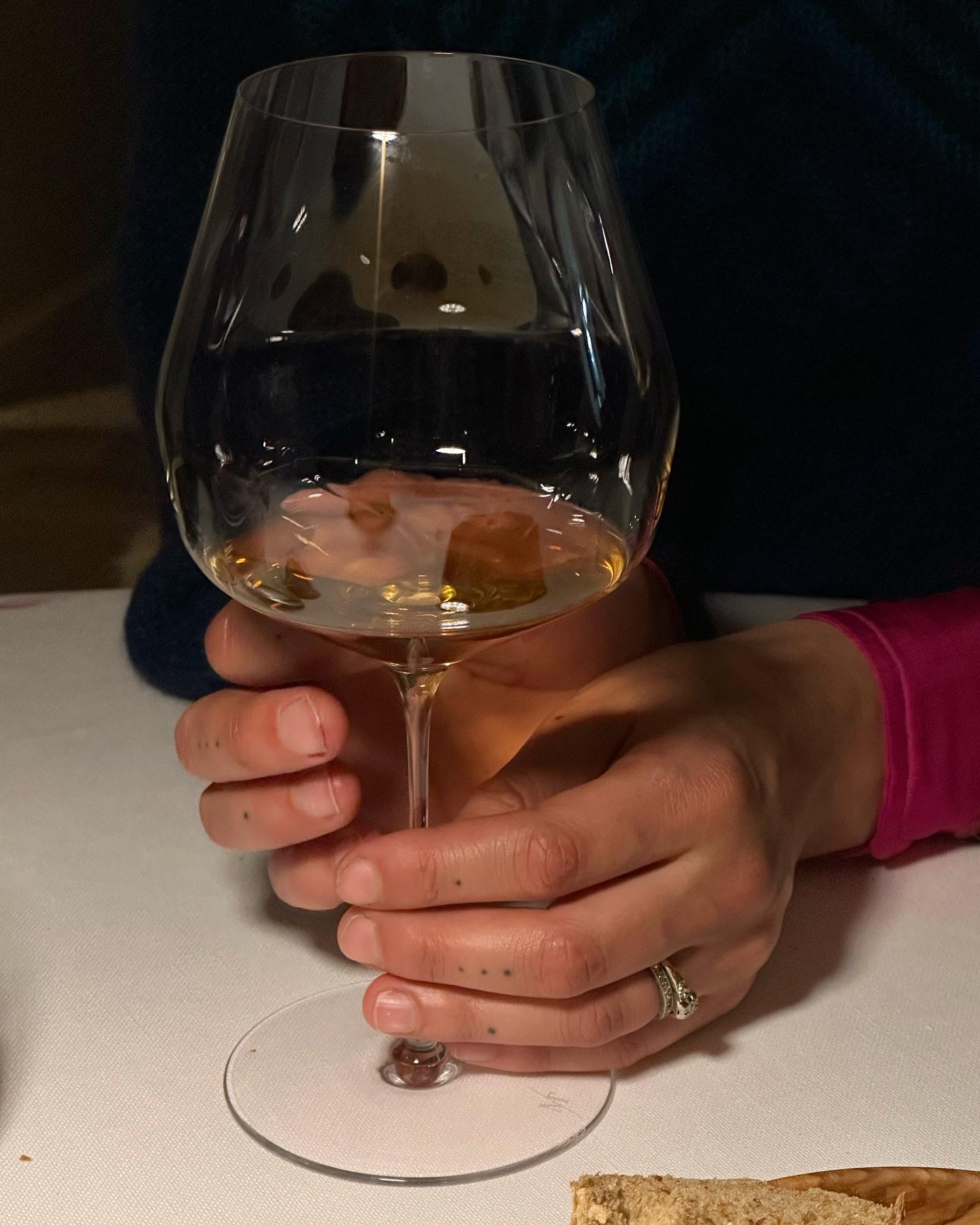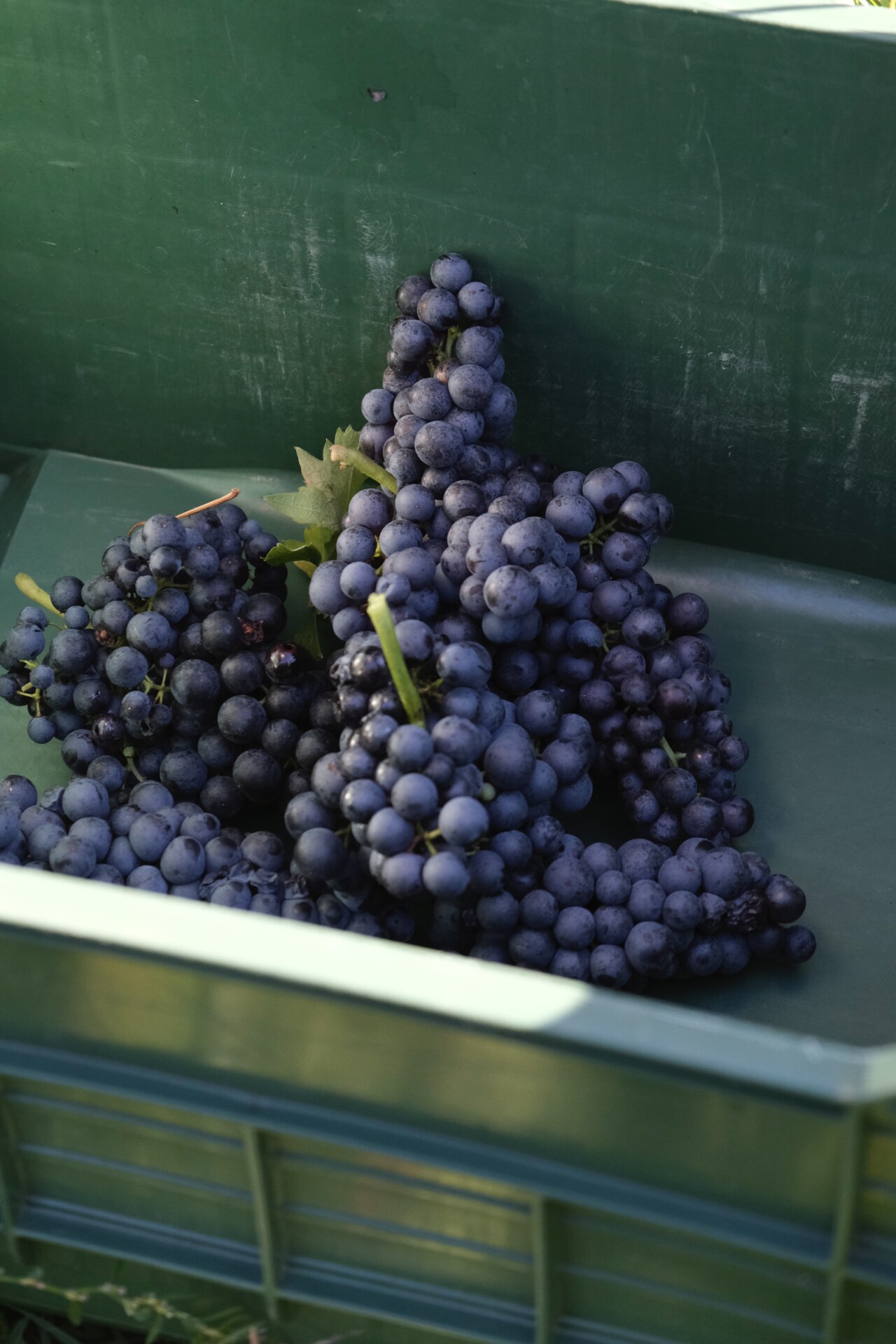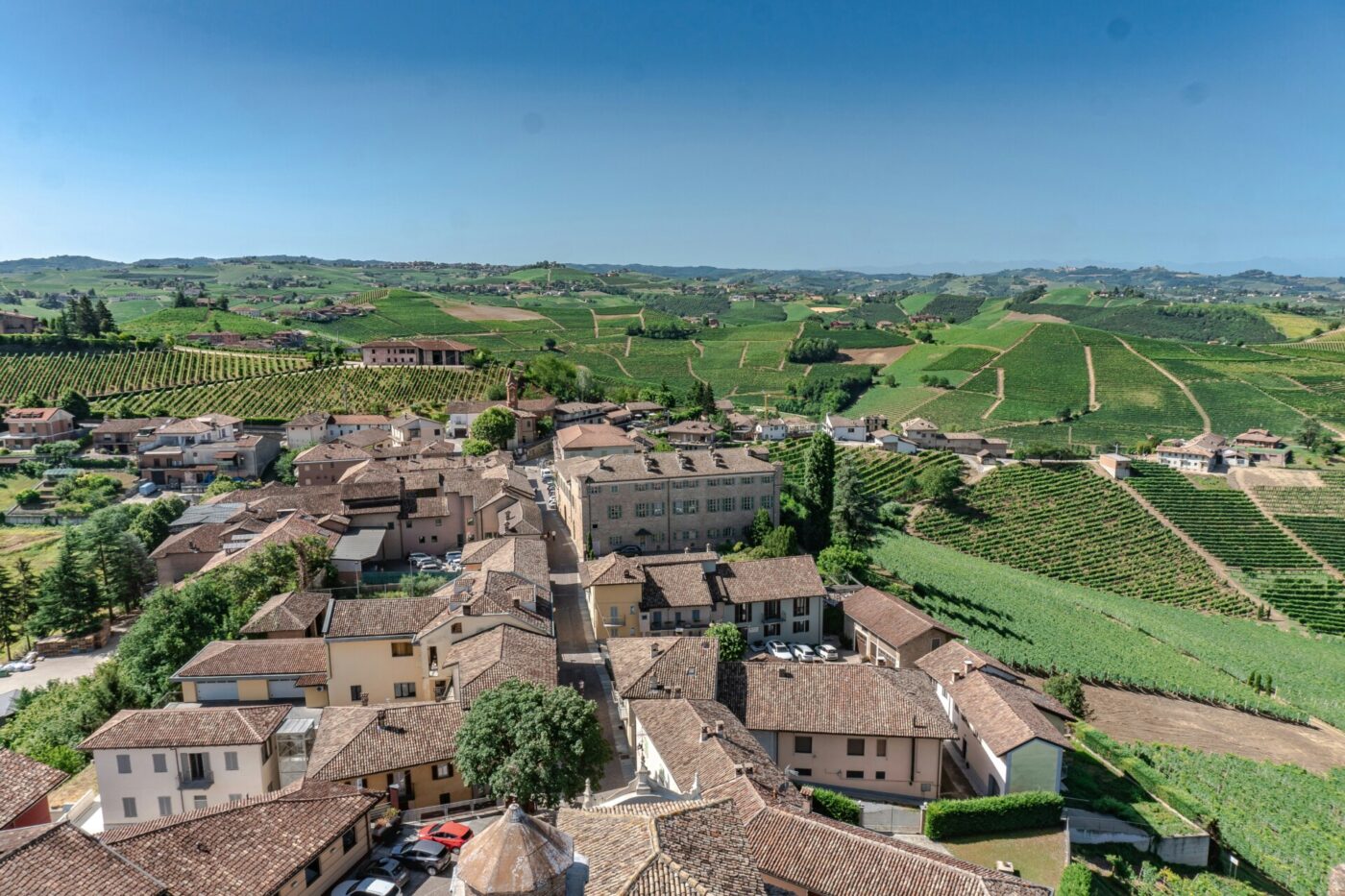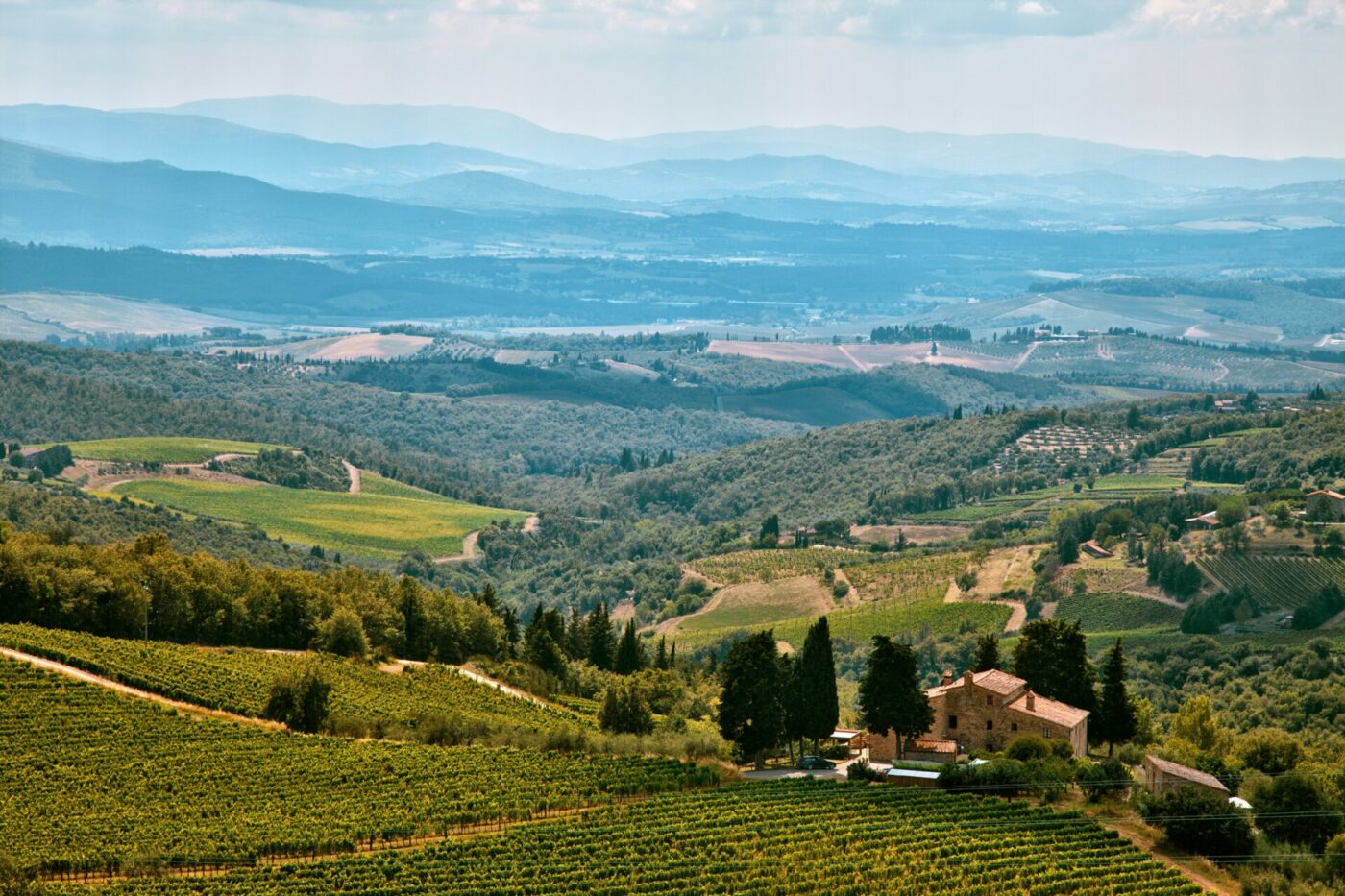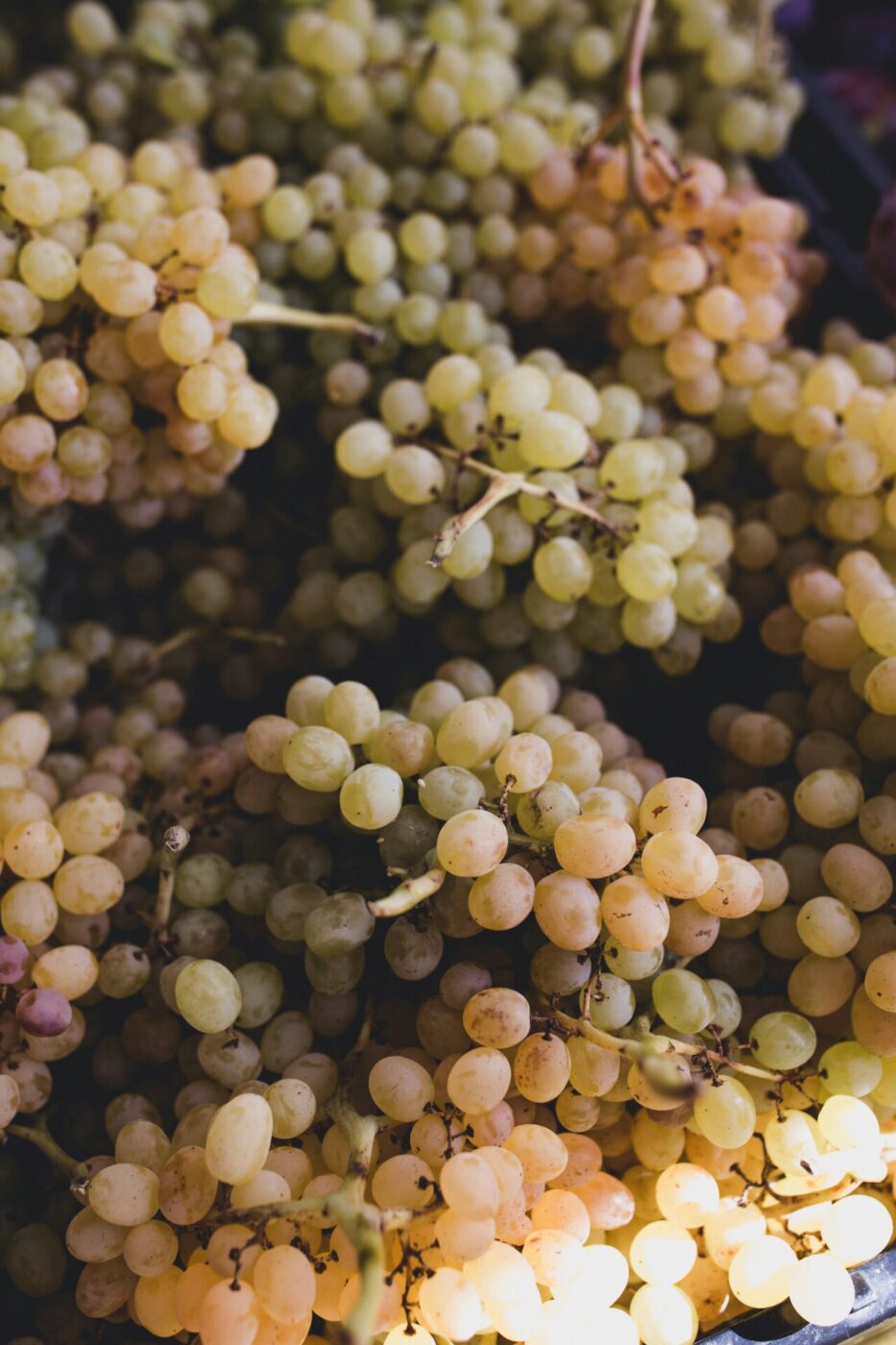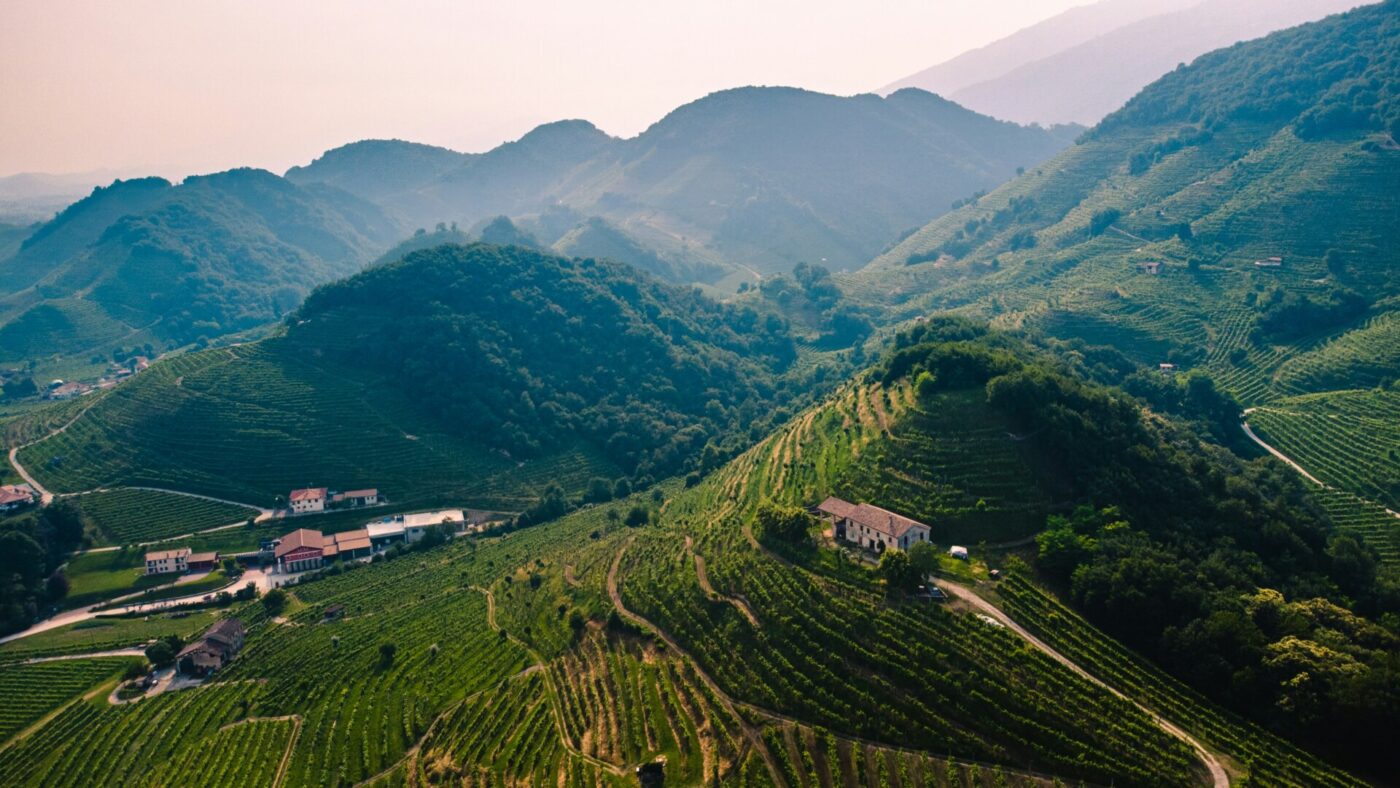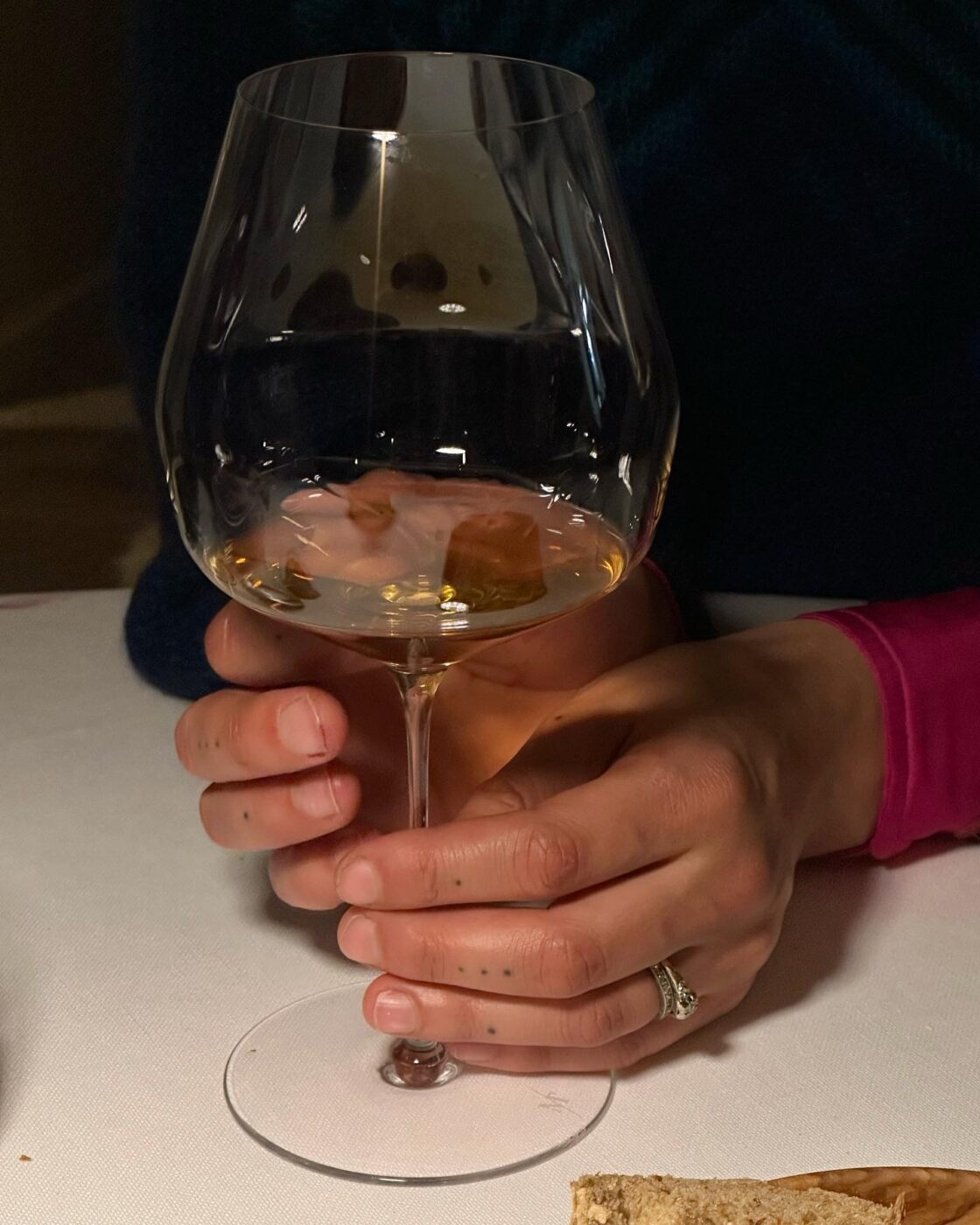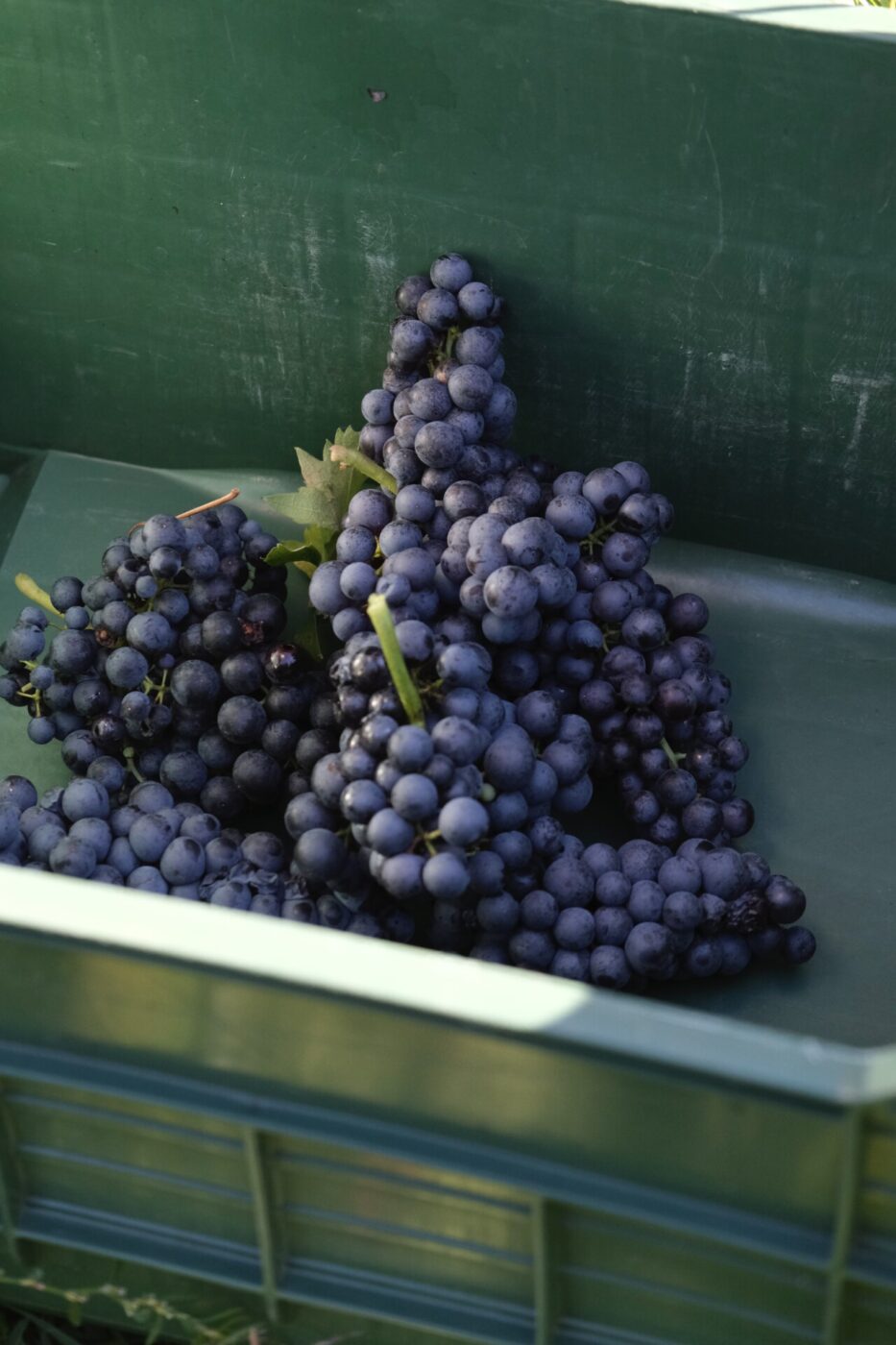When it comes to indigenous grape varieties, Italy is king. With over 2,000 to choose from, winemakers literally have the pick of the bunch, yet only a handful (think Sangiovese and Nebbiolo) have gained international notoriety. If you want to explore more interesting styles of wine that you won’t find elsewhere, and buy wines that offer better value for money, then indigenous grapes are the way to go.
The annual Decanter World Wine Awards is typically awash with Italy’s best-known and loved grapes, many of which have become international stars. You’ll see plenty of award-winning wines made with Barbera grapes (for Barbera d’Asti and d’Alba wines), Sangiovese (Chianti), Nebbiolo (Barolo), Corvina (Valpolicella), and Cortese (Gavi), but not many of Italy’s indigenous varieties. Yet in 2024, a white wine made from 100% Turbiana grapes grown in the tiny subregion of Lugana DOC took a Platinum Award, scoring an impressive 97 points from the judges. Turbiana isn’t grown outside of Lugana, let alone Italy, and it’s a sign that the world is taking note of Italy’s local grapes. Not only do they offer value for money as the underdog, but also a classification system that guarantees authenticity and quality.
In many regions, international varieties such as Chardonnay, Merlot, and Sauvignon Blanc aren’t allowed at all, and if growers want to plant them, their wines can only ever be classified as IGT (Typical Geographical Indication) or Vino di Tavola (table wine), while wines made from local grapes can take the more prestigious titles of DOC or DOCG, meaning the wines are from a controlled designation of origin.
There are exceptions to the international grape rule, most notably Bolgheri DOC in the Maremma region of Tuscany, where wines made with the classic Bordeaux blend of Cabernet Sauvignon, Merlot, and Cabernet Franc were granted their DOC status after gaining a cult-like following and commanding high prices as table wines under the Super Tuscan banner. However, for much of the rest of Italy, wine lists predominantly feature grapes that do not grow elsewhere in the world, at least not in notable quantities.
Here, seven indigenous Italian varieties that are on the up, including where to find them and how they compare to the country’s better-known wines.
Catarratto
The most widely planted grape in Sicily is best known for its role in sweet Marsala wines, but on its own, it makes delicious white wines with zesty lemon notes, leading to full-bodied peach if allowed to ripen fully. In Etna DOC, the island’s best-known denomination, the volcanic soil lends it a texture and salinity that some wine folk call minerality. In this part of the world, the weather is reliably warm and dry, offering optimal conditions for winemakers to farm organically, and you will find many organic and natural styles of Catarratto, with some winemakers experimenting with skin contact to make more textural and aromatic orange wines. Thought to be a descendant of Corvina, the grape that makes Gavi DOC wines, you can expect the same freshness and round mouthfeel with Catarratto.
Freisa
In Piedmont, winemakers say that you drink your Freisa while waiting for your Barolo, however, this might be doing this black grape a disservice. Up until the 19th century, this vigorous grape, whose name translates to “strawberry” in Italian, accounted for almost half of all production in the Asti and Alessandria subregions. Ernest Hemmingway was a fan; in his novel A Call to Arms, the writer described Freisa as a “clear, red, tannic, and lovely” wine. Studies have shown that it bears more than a resemblance to the local Piemontese star Nebbiolo, the grape that makes Barolo wines. In fact, the writer Ian D’Agata, author of Italy’s Native Wine Grape Terroirs, suggests that Freisa is more likely Nebbiolo’s parent. In a blind tasting of aged Freisa and Nebbiolo wines, one might struggle to tell the difference; both have a light, squashed strawberry color and zippy acidity with big, bold tannins that make them age worthy.
At G.D Vajra, one of Italy’s best-known Piemonte estates, they make a 100% Freisa wine that would appeal to those searching for a lighter take on a Barolo. You get the same beautiful aromas–cherry, earth, and light floral notes–but there’s a lighter body and softer structure. G.D Vajra’s Langhe DOC Freisa is named “Kyè”, which in Piedmontese dialect translates to “Who is it?”–a tongue-in-cheek tribute to the little-known Freisa.
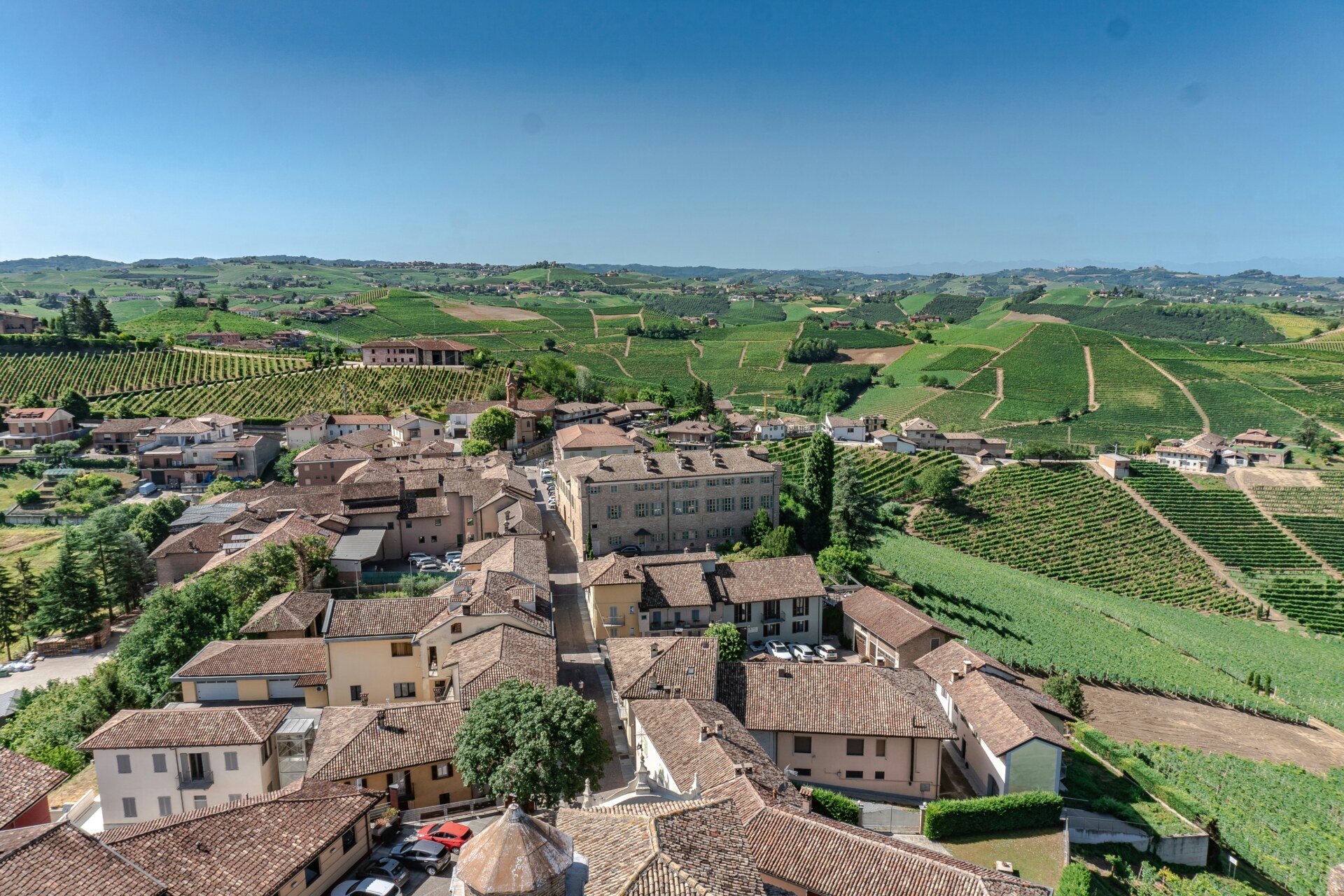
Piedmont
Lacrima
Meaning “teardrop” in Italian, possibly due to the way the grapes “sweat” or even split in warm weather, Lacrima is indigenous to the coastal Marche region on the opposite side of the country to Tuscany. Nose a glass and you’d be forgiven for thinking you were sniffing Gewürztraminer, an aromatic white grape with notes of Turkish delight. There aren’t, in fact, many aromatic red varieties in the world, but Lacrima is one of them and it smells intensely of flowers–think rose and potpourri–pepper, and dried fig. With such strong flavors to contend with, spicy food is an unusual but pleasing pairing, a chili con carne or Thai curry in particular.
Nosiola
Nosiola made in Trentino could be Italy’s answer to Burgundian Chardonnay. Wines made in Burgundy’s best villages command staggering prices and are seen as highly collectable. Like white wines made in Burgundy, Nosiola wines are often dry in style with flavors of apple, lemon, brown butter, and minerality in youth, and with bottle age, they develop nutty notes. If raisoned with botrytis–the fungus that helps to create sweet wines–Nosiola can be made into Vin Santo, one of Italy’s finest dessert wines, with notes of raisins, hazelnuts, honey, caramel, and dried apricots. While Vin Santo is typically associated with Tuscany, where it is made using Trebbiano and Malvasia grapes, Trentino Vin Santo DOC wines can offer better value for money. Serve with a plate of cantucci (what anglophones know as biscotti), to be dipped into the sweet wine, and you’ve got one of Italy’s most famous after-dinner treats.
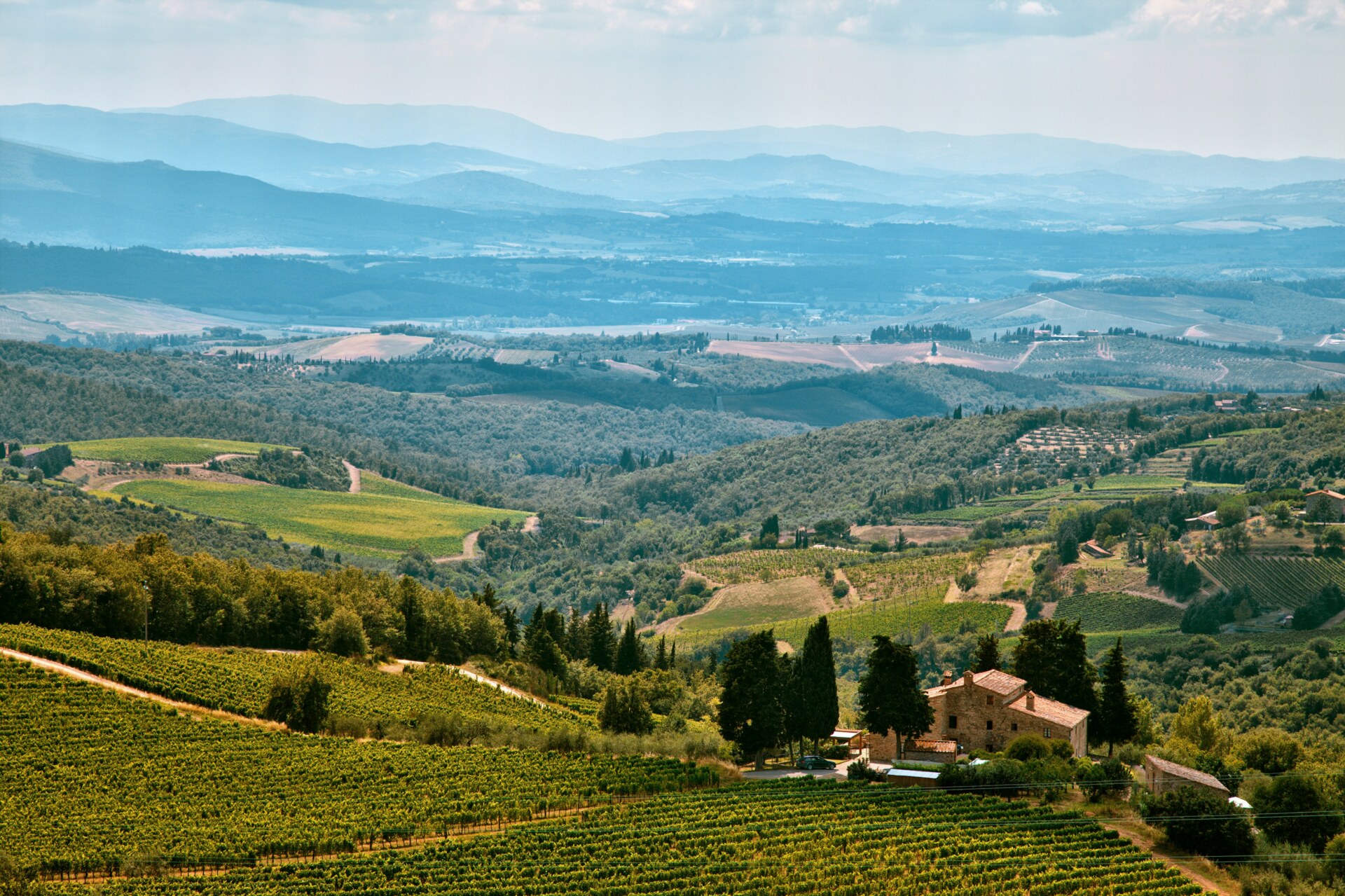
San Felice winery in Chianti
Piedirosso
Meaning “red feet” in Italian because the stem is made up of three stalks and is brick coloured, resembling a dove’s foot, Piedirosso hails from the Campania region and is mostly grown on the volcanic soils around Mount Vesuvius. Usually blended into regional wines, a handful of producers are returning to single varietal styles to celebrate this red grape. The reliably sunny weather around Naples helps to create wines with a sumptuous, silky quality, with the classic Italian red cherry notes to accompany bramble and plum as well as some herbal aromatics like oregano and pink peppercorns. With age, Piedirosso resembles Pinot Noir, with damp earth and mushroom on the nose. In youth, single varietal Piedirosso has crunchy red fruit flavors such as cranberry, and fine tannins that make it chillable and perfect to pair with a slice of Naples’ most famous export.
Pugnitello
Pugnitello is an ancient red Tuscan grape variety with a name meaning “little fist”, referring to the balled-up shape of the grape clusters on the vine. At the historic San Felice winery in Chianti, Tuscany, they have planted an experimental vineyard in collaboration with Pisa and Florence universities where students are studying the grape. A 100% Pugnitello wine with the grape as its namesake was released by San Felice in 2020, and the estate is confident it rivals their Chianti Classico in structure, with notes of wild fruit, warm spices, and tobacco. As with Chianti Classico, Pugnitello ages particularly well, so stock your cellar now with younger vintages and watch as their potential grows.
Teroldego
Similar in style to Syrah, and with parental links to it, Teroldego is a red wine widely grown in the Trentino-Alto Adige region. Here, 70% of vineyards are planted 1,000 meters (3,000 feet) above sea level, and the Dolomites provide a rain shadow for many vineyards. These dry, sunny conditions help commonly planted grapes like Pinot Bianco, Chardonnay, and Pinot Noir to ripen fully and remain fresh tasting. Teroldego has a dark skin and produces deeply pigmented wines with an intensely fruity character, often with notes of violet, bitter almonds, and dried fruits that lead people to compare it to Primitivo. In Trentino, it is often served with roast duck and boiled chestnuts.
